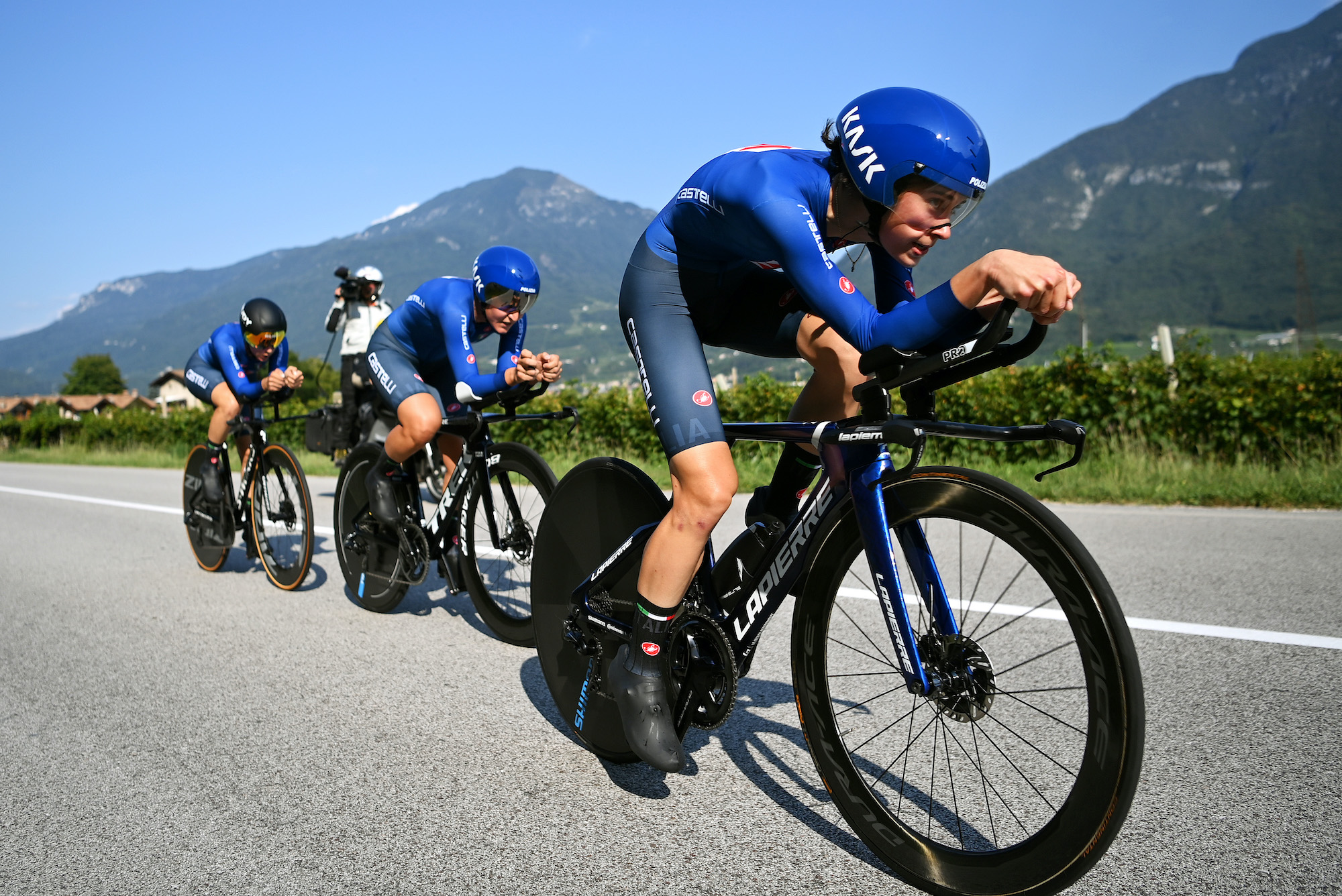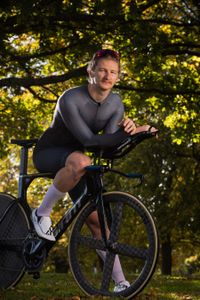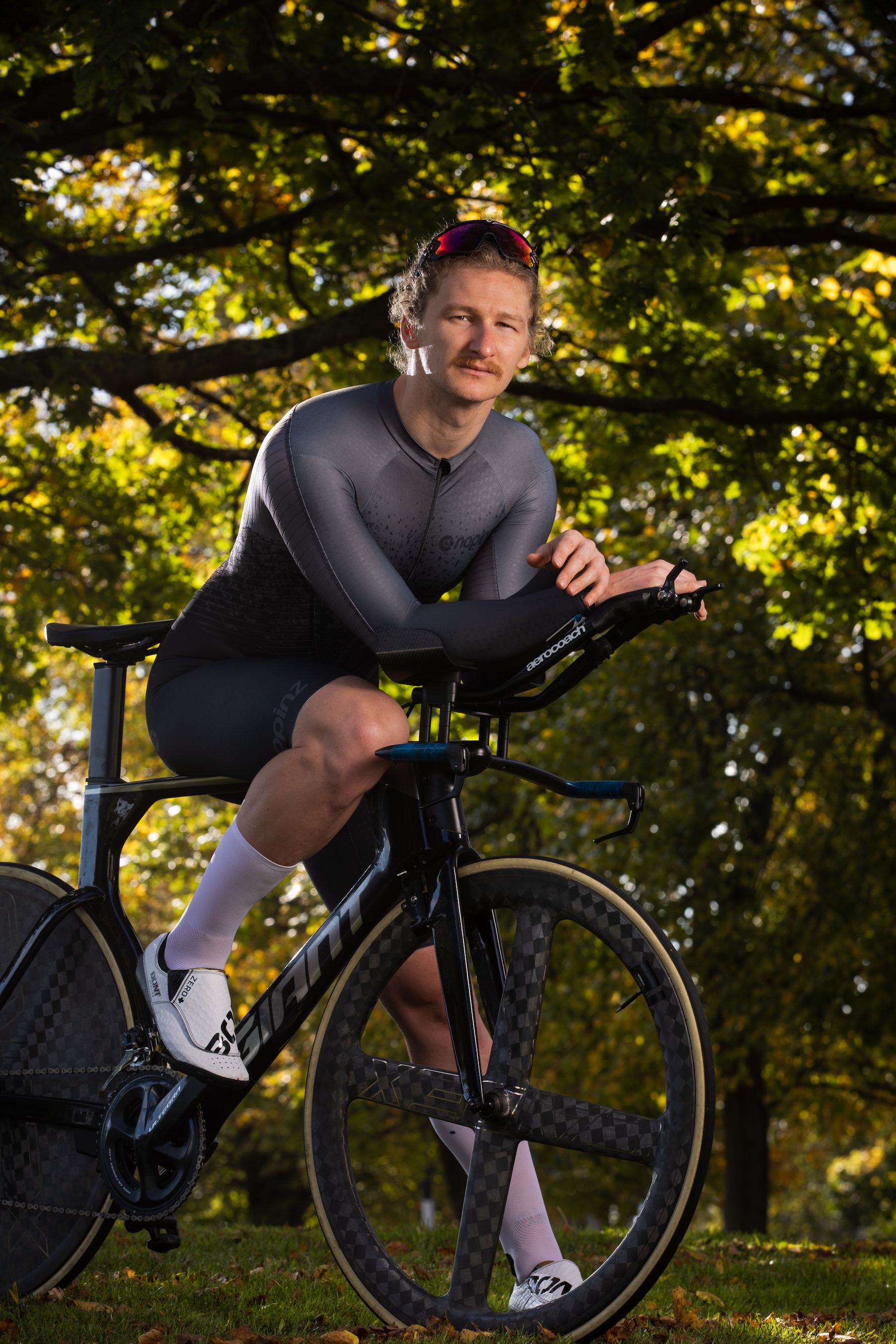Road World Championships 2021: How does the mixed relay time trial work?
The new discipline made its debut in Yorkshire and is a unique perspective on racing


The mixed relay team time trial returns to the World Championships in 2021 in Flanders, as the rainbow bands will once again be handed out in the slightly unusual discipline.
First introduced in the Yorkshire 2019 Worlds, the mixed relay replaced the old team time trial, which was decided between trade teams.
The event wasn't held in 2020 due to the coronavirus pandemic, which means the reigning champions are still currently the Netherlands after winning the inaugural edition in 2019.
We did see the European mixed relay title handed out in Italy earlier this month, with the home nation securing the victory there, making them favourites to win the title in Flanders.
The start list also features some of the biggest names in the world, including Filippo Ganna (Italy), Annemiek van Vleuten (Netherlands) and Alex Dowsett (Great Britain).
But how does the innovative new format work? Cycling Weekly delved back in to the UCI rules and regulations to find out.
Team numbers
The latest race content, interviews, features, reviews and expert buying guides, direct to your inbox!
The number of riders in a team time trial is determined by each individual race, with teams of six competing in the Worlds mixed TTT, but the UCI stipulates that the number of riders per gender in the mixed event must be at least two and no more than six. The maximum team size for any mixed relay TTT is 12.
Distance
The UCI has also set a maximum distance for all team time trial events.
Riders in an elite or under-23 mixed relay TTT can take on a maximum distance of 25km per gender in the World Championships, or 50km per gender for other events.
The World Championship event will see riders tackle a 14km course, with the men’s and women’s units completing one lap each, taking the total distance to 28km.
To compare with other TTT events, men’s elite TTT events can be up to 100km, with women’s events capped at 50km.
Starting order
The starting order of any TTT is determined by the organiser, with the UCI establishing the schedule at the World Championships.
In mixed relay TTTs, the UCI rules state that the men must start first and relay to their women team-mates.
Relay zone for the mixed relay TTT
The gender receiving the relay line up in start lanes set up at the start line, with at least two start lanes provided. At the World Championships, three start lanes will be provided.
Riders will be held side-by-side on the start line and released by holders on the relay signal, but they must not be pushed. The holders will be the same in each start lane for all teams.
Timekeeping
The relay and start of the women riders will be given by the second male rider crossing the finish line.
The overall finishing time will be taken on the second female rider at the World Championships.
For mixed team relay the classification of teams will be the continuous time of both genders.
If there is a mechanical malfunction of the relay system provided by the race organisation that leads to an early or late start, the commissaires’ panel may adjust the final results to take into account the actual times recorded.
False start
A false start occurs when at least one rider takes the relay before the relevant team-mate has crossed the relay line.
Any riders committing a false start of less than three seconds will be given a 10-second penalty, while a false start of more than three seconds will result in disqualification.
Slipstreaming
In mixed relay events, teams that take their relay at the same time must respect the lateral gap of two metres between them. After one kilometre, the team caught shall ride at least 25m away from the other.
The commissaire will decide which team will ride at least 25m away from the other based on their position after one kilometre.
Disqualification
If a rider is disqualified their team will also be disqualified and the classification shall be adjusted.
Alex Ballinger is editor of BikeBiz magazine, the leading publication for the UK cycle industry, and is the former digital news editor for CyclingWeekly.com. After gaining experience in local newsrooms, national newspapers and in digital journalism, Alex found his calling in cycling, first as a reporter, then as news editor responsible for Cycling Weekly's online news output, and now as the editor of BikeBiz. Since pro cycling first captured his heart during the 2010 Tour de France (specifically the Contador-Schleck battle) Alex covered three Tours de France, multiple editions of the Tour of Britain, and the World Championships, while both writing and video presenting for Cycling Weekly. He also specialises in fitness writing, often throwing himself into the deep end to help readers improve their own power numbers. Away from the desk, Alex can be found racing time trials, riding BMX and mountain bikes, or exploring off-road on his gravel bike. He’s also an avid gamer, and can usually be found buried in an eclectic selection of books.
